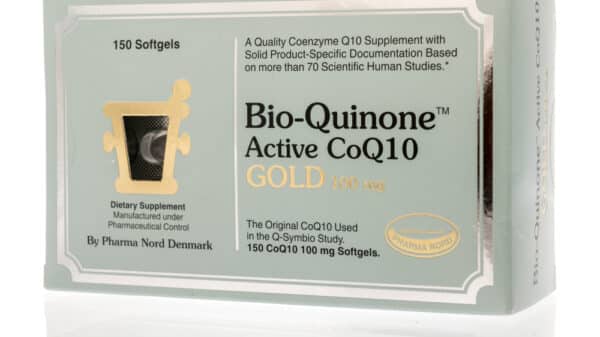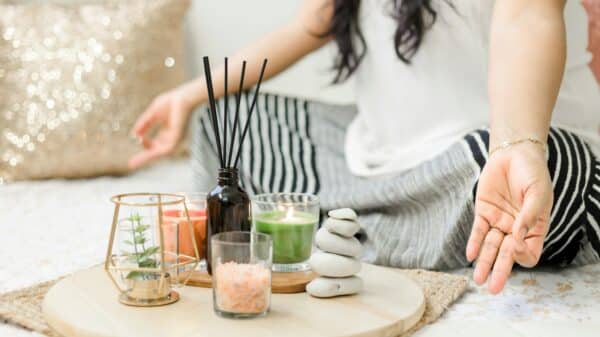If you’re a regular at the gym, you probably find your kitchen cabinets bursting with an array of tubs and containers filled with various supplements. I can definitely relate—my own compact apartment pantry is practically a fortress of pre-workout formulas and protein powders. Recently, I stumbled upon some buzz on GymTok about a particular supplement that made me consider an impromptu trip to my local sports nutrition store, despite my already overflowing shelves.
Prior to joining TikTok, I had heard about creatine. Still, it wasn’t until I entered the realm of fitness influencers that I truly grasped the hype surrounding it, particularly as these social media stars touted its positive effects on muscle growth. There’s even a popular TikTok audio clip that humorously highlights how using creatine can contribute to shaping that ideal posterior.
But really, what is creatine, and why has it become the go-to supplement for many weightlifters?
Understanding Creatine
Creatine (abbreviated as Cr) is a nitrogenous amino acid found naturally in our bodies. It’s concentrated primarily in our muscles and brain, playing a crucial role in energy production. When paired with phosphate, creatine generates adenosine triphosphate (ATP), which serves as a major energy source during high-intensity activities. Most people obtain about half of their creatine through their diets—think of sources like eggs, red meat, poultry, and fish—while the other half is synthesized by the liver and kidneys. On average, a meat-eating adult consumes about 1-2 grams of creatine daily just through food.
There are various creatine supplements available, but the most widely recognized and studied one is creatine monohydrate. Whether you buy it as a powder or in pill form, it’s important to know that it has the most robust backing in terms of research and benefits. If you’ve seen your favorite GymTok influencer talking about their creatine stash, chances are they’re referring to this very form.
Benefits of Creatine Supplementation
Why do so many people turn to creatine? Because it acts like rocket fuel for your muscles. It helps you push harder and longer during workouts, enhances recovery times, and is especially effective for high-intensity, short-duration activities, such as powerlifting.
Russender Powell, a registered dietitian and founder of The Nutrition Lady, sheds light on this subject, pointing out that athletes frequently favor creatine due to its energy-boosting properties.
“Simply put, creatine acts as an energy booster,” Powell explains. “It enables muscles to undertake more intense work, laying the groundwork for muscle growth. This ability to sustain high-intensity workouts can promote both muscle enlargement and strength.”
In a 2020 review conducted by the International Society of Sports Nutrition (ISSN), a comprehensive assessment of peer-reviewed literature solidified that creatine is deemed “the most effective ergogenic nutritional supplement available for athletes seeking to enhance high-intensity exercise capacity and gain lean body mass during training.”
Powell further emphasizes that creatine helps your body recycle energy more efficiently. “If someone is lifting 500 pounds, it feels less taxing when you’re supplementing with creatine,” she points out.
Is Creatine Safe to Use?
Creatine monohydrate enjoys a reputation as one of the most researched dietary supplements in the fitness world. Both the International Olympic Committee and the National Collegiate Athletic Association have greenlit its usage among athletes. The International Society of Sports Nutrition reports no evidence indicating any harm from short- or long-term use of creatine in healthy adults when consumed at doses of up to 30 grams daily for five years.
However, individuals with underlying conditions like liver or kidney dysfunction—or diabetes—are often advised to steer clear of creatine supplementation.
“It’s generally safe,” Powell reiterates, “but for those with preexisting liver or kidney issues, complications can arise since elements containing nitrogen can place additional stress on these organs. If someone has liver issues, chronic kidney disease, or related conditions, their liver function may already be at risk. It’s wise to be cautious when it comes to such supplements.”
That said, one important thing to understand is that, like many nutritional supplements out there, creatine is not regulated by the Food and Drug Administration. This means the product you buy might not always match what’s on the label in terms of quality, quantity, and ingredients. There’s a possibility that what you’re ingesting could contain fillers or even unlisted potentially harmful materials.
To navigate this, Powell advises anyone interested in trying out supplements to select brands that have received third-party certification from organizations like ConsumerLab or the United States Pharmacopeial Convention. Such organizations perform independent testing to ensure both purity and effectiveness of the products you’re considering using.
“They act like external auditors,” Powell explains. “They check for harmful substances and assess production conditions. Is the product manufactured in a sterile environment? Is it going to work effectively? Essentially, they fill the gaps where the FDA should step in, providing certificates that ensure the product has passed rigorous testing for purity and quality.”
For those interested, here are two creatine supplements that have successfully passed third-party testing and boast NSF (National Sanitation Foundation) certification for sports nutrition.
Considerations Before Starting Creatine
1. It’s Not Essential for Muscle Building
While creatine can jumpstart some individuals towards reaching their fitness goals, it’s important to clarify that it isn’t absolutely necessary for muscle growth. Powell stresses that the key to creatine’s effectiveness lies within providing the ability for extra training sessions: it’s during those additional workouts where muscles can recover and grow stronger.If you’re looking to seriously elevate your fitness game and gain some muscle mass, you’ve probably heard about the benefits of adding resistance training into your workout routine. You might want to start with the aim of consuming at least 1 to 2 grams of protein for every kilogram of your body weight each day. That may sound like a lot, but when you consider how much protein is in common foods, it becomes a lot more manageable!
“Anything that engages the muscles—whether that’s lifting weights, using resistance bands, or even doing bodyweight exercises like push-ups—can contribute to muscle growth,” explains registered dietitian and fitness coach Powell. What’s truly effective, though, are resistance exercises that push your muscles to their limits. This is what leads to that all-important muscle fatigue. It’s through this type of consistent effort that you’ll lay the groundwork for increased muscle mass. Trust me, if you focus on training a muscle group regularly, you’ll eventually see growth, especially if you stick to it and stay committed.
But let’s flip the coin and talk about some potential downsides to supplements like creatine, which some people turn to for a quick boost. There are some serious things to keep in mind here. Individuals might experience bloating, dehydration, diarrhea, elevated blood pressure, weight gain, kidney issues, and even liver damage—not exactly what you signed up for, right? Everyone’s body reacts differently, and while some may not experience these side effects, the risks can sometimes overshadow the promised benefits. That’s why it’s crucial to have a chat with your healthcare provider before jumping into the world of supplements.
You might be tempted to think that incorporating creatine into your diet is like finding a magic pill for fitness. Let me tell you, it’s not. Just like with any supplement, you won’t see instant gains just by taking it. You can expect to wait anywhere between 7 to 28 days before you notice changes in your energy levels and performance. Powell stresses that trying to rely on supplements as a shortcut is a setup for disappointment.
“If you take creatine without engaging in any physical activity, it’s not going to magically transform you,” Powell says firmly. “Creatine is designed to enhance performance and benefit those who are active. If you’re sitting on the couch, don’t expect to see any muscle gain. Let’s face it—there are no shortcuts in building muscle!”
So if you’re truly committed to your fitness goals, focus on nutrition, exercise, and proper recovery instead of seeking out quick fixes. Your body, mind, and long-term success will thank you for it!
































